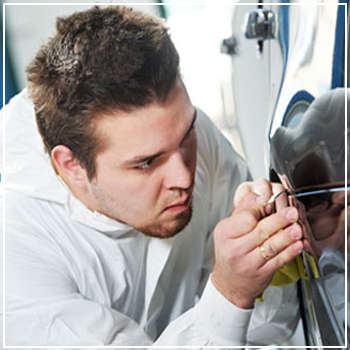 Car lovers and DIY enthusiasts often grab a paint kit from the auto store to give their vehicle a fresh look. But over time, issues like rust, bubbles, or dents can pop up on the surface. Unfortunately, just painting over the problem doesn’t solve it—it only makes things worse.
Car lovers and DIY enthusiasts often grab a paint kit from the auto store to give their vehicle a fresh look. But over time, issues like rust, bubbles, or dents can pop up on the surface. Unfortunately, just painting over the problem doesn’t solve it—it only makes things worse.
That’s why a professional paint job, ideally done in a controlled spray booth, is so important. It not only gives your car a better finish but also prevents future problems. So what happens if you skip a repaint or go with a poor-quality job?
Bleeding
Bleeding occurs when the old paint shows through the new coat, creating an uneven, mottled look. This usually happens if the surface wasn’t properly prepared or if the new paint color is too light. To avoid this, always sand the old paint and apply a primer before adding the topcoat.
Die Back or Dulling
Over time, your car’s shiny finish may start to lose its luster, turning into a dull, flat appearance. This is more common if you wait too long between coats or if the first layer isn’t fully cured. A little maintenance and proper technique can help keep that glossy shine for longer.
Dirt & Debris
When you paint outside, especially in your driveway, dust, dirt, and small particles are hard to avoid. These can settle into the wet paint, causing a rough, bumpy texture. Using a closed spray booth helps eliminate these issues and ensures a smoother finish.
Air Trapping
Small bubbles that pop during painting create “fish eyes,†which look like tiny craters on the surface. This happens when the car isn’t clean before painting, or when contaminants like silicone or oil mix into the paint. Always make sure your surface is spotless and your equipment is clean.
Orange Peel
This effect looks like the texture of an orange peel—small pits and bumps on the surface. It usually happens when the paint dries too quickly before it can smooth out. Improper spray gun use, extreme temperatures, or incorrect paint mixing can all lead to this issue.
Running and Sagging
If you apply too much paint at once, it can drip down the sides of your car, creating thick, uneven areas. This often happens when you don’t let the base coat dry properly, or when you’re painting in cold weather. Slow, even strokes are key to avoiding this.
Fading
Parking your car in direct sunlight without protection can cause the paint to fade over time. Regular washing and waxing can slow this process, but nothing beats a professional paint job to maintain that brand-new look.
Wrinkling
Also known as “lifting,†wrinkling happens when the new paint shrivels up while drying. This is usually caused by using the wrong type of paint or not letting the previous coat dry completely. Proper preparation and timing are essential.
Edge Mapping
This happens when the solvent from the new paint seeps into the undercoats, causing wrinkles around the edges. Poor quality primers or sealers can contribute to this problem, so always use high-quality materials.
Cracks or Crow’s Feet
Paint cracks or develops a spiderweb-like pattern when a coat is too thick or when too much hardener is used. Painting over existing cracks can cause them to reappear in the new layer. Be careful with your application techniques.
Peeling
Just like house paint, car paint can peel if it doesn’t have enough time to dry. Without proper curing, the layers won’t stick well and will eventually come off. Patience is key when it comes to auto painting.
Mottling
Metallic finishes are especially prone to mottling, where the paint looks streaked or uneven. This can happen due to improper spray patterns, incorrect gun angles, or not allowing the paint to dry between coats. Practice and attention to detail can prevent this.
If your car’s paint is looking rough, faded, or uneven, it might be time to call in the pros. Contact DaSilva’s Auto Body today to get your car back to its best condition!
DC Inverter Horizontal Condensing Unit
Dc Inverter Horizontal Condensing Unit,Horizontal Condenser Unit,Dc Welding Inverter,Horizontal Mixer Unit
TAIZHOU NANFENG COLD-CHAIN CO., LTD , https://www.windpolar.com